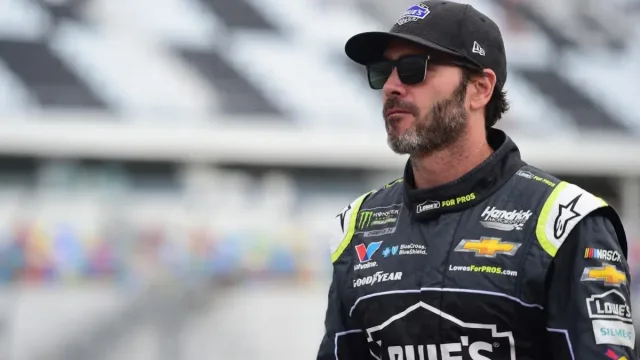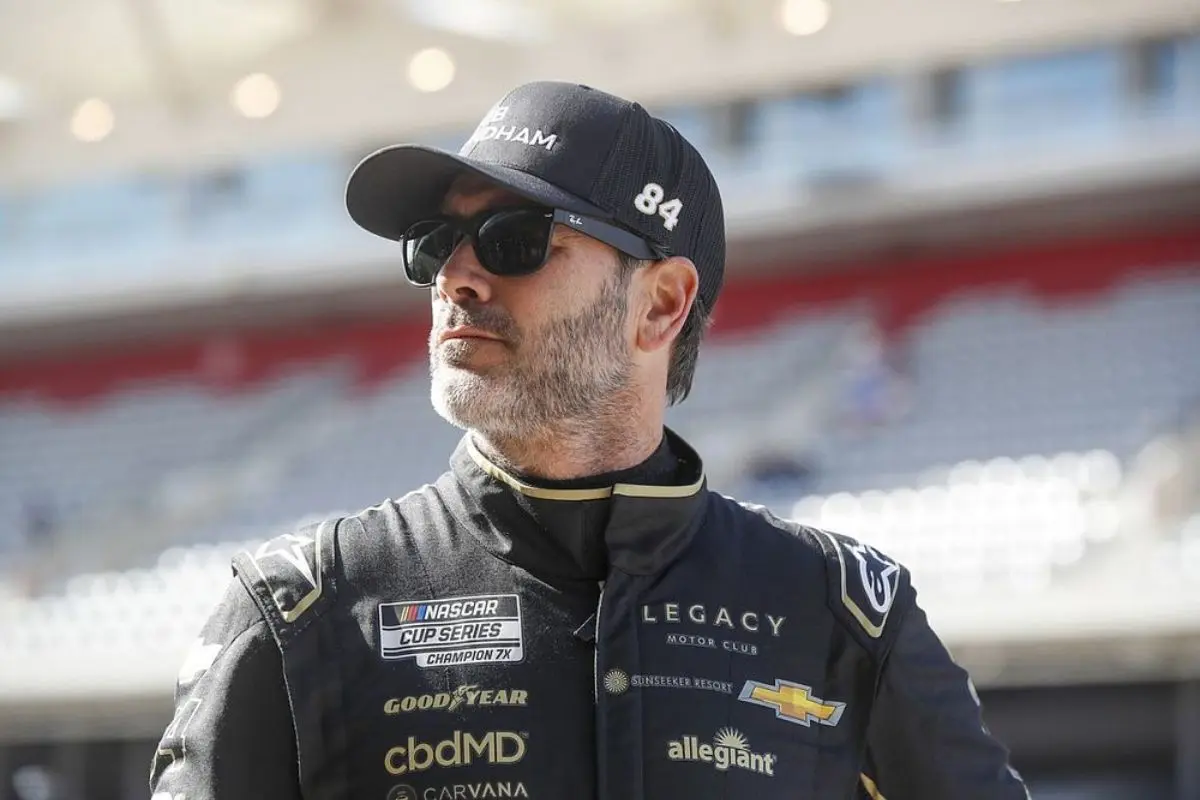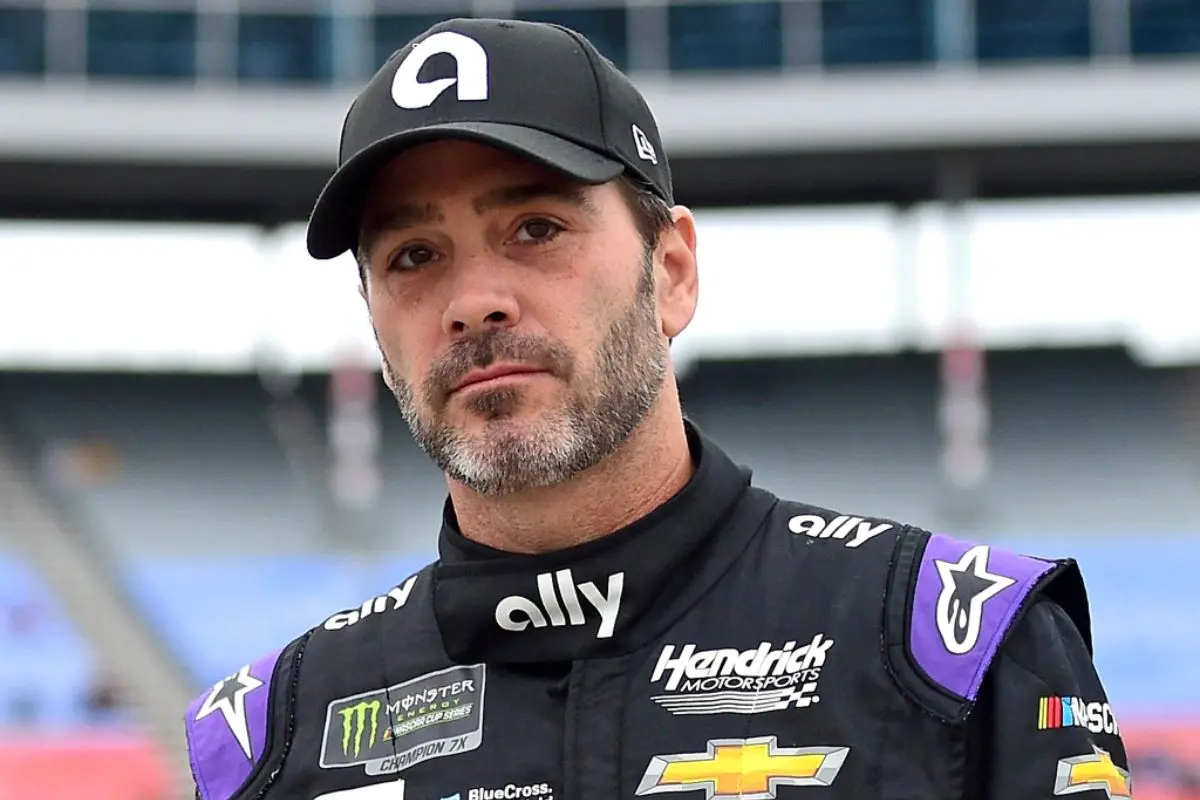Jimmie Johnson slams the media for portraying him as a cold, emotionless competitor, a label that never matched the man behind the wheel. Despite seven championships and countless victories, the NASCAR icon faced a hidden battle off the track. What fueled this narrative, and how did it affect his legacy? The answers lie in Johnson’s untold story—a journey marked by resilience, frustration, and a quest to reveal his true self to the world.
Key Highlights
- Jimmie Johnson criticized the media for portraying him as an “unfazed robot,” ignoring his emotional depth and struggles.
- Johnson’s composed exterior masked inner turmoil, leading to media mischaracterization of his persona.
- Media narratives overshadowed Johnson’s emotional challenges, exacerbating the disconnect with fans.
- The media’s portrayal simplified Johnson’s complex character, missing opportunities for empathetic connections.
- Johnson’s journey highlights the emotional toll faced by athletes due to media misrepresentation.
The Role of Media in Shaping Athlete Image
In the landscape of professional sports, media’s influence is a multifaceted force that substantially shapes the public personas of athletes. This dynamic is especially pronounced in contexts where direct access to sports figures is limited, positioning media as the primary conduit through which fans and the general public form perceptions. Historically, media has wielded the power to enhance athletes to iconic status or, conversely, to highlight and amplify their flaws, often distorting reality in the process.
The role of media extends beyond mere reportage, acting instead as an interpreter of athlete narratives. This interpretative function is essential, particularly when considering sports figures who operate within highly competitive environments. Athletes are often scrutinized under an unforgiving microscope, where even minor missteps can be magnified into notable controversies.
The media’s portrayal can cement an athlete’s legacy, whether as a paragon of excellence or a cautionary tale of unfulfilled potential. For athletes who achieve unparalleled success, like Jimmie Johnson, the media’s role can become a double-edged sword. Despite his monumental achievements, Johnson’s public image did not always reflect his on-track success, revealing how media narratives can diverge from an athlete’s reality.
Such discrepancies highlight the media’s capacity to construct and deconstruct public images based on criteria that may not align with the athlete’s personal or professional truths. In substance, the media’s role in shaping athlete images is a potent one, capable of crafting narratives that both define and confine, leaving indelible marks on the legacies of sports figures.
Jimmie Johnson’s Struggles with the Media
While media’s interpretative role can raise or undermine an athlete’s public image, Jimmie Johnson‘s experience highlights the complexities and challenges inherent in this dynamic. Known for his stoic on-track demeanor, Johnson, a towering figure in the world of NASCAR, found himself battling an off-track narrative he believed misrepresented his character.
Despite a career marked by extraordinary success, the media’s portrayal of Johnson as an “unfazed robot” not only overshadowed his achievements but also potentially fueled animosity among fans.
In a candid interview with High Performance, Johnson expressed his frustration with the media’s depiction, which he saw as a profound misunderstanding of his true persona. This depiction, he argued, detracted from his emotional and human side, painting him instead as a machine-like competitor devoid of the struggles and adversities faced by anyone at the pinnacle of their profession.
“You said there are quite a few moments that spring to mind when you think about you performing in the face of adversity; would you talk us through a couple of them?” – Jimmie Johnson
Johnson’s narrative points to a broader issue within sports media: the tendency to simplify complex personalities into easily digestible stereotypes. His story emphasizes the tension between an athlete’s lived reality and the often reductive narratives crafted by media outlets.
For Johnson, the real adversity lay not in the sport’s evolving challenges, but in wrestling with an image that seemed impervious to his personal truths. As he succinctly put it, “Most people hate dominance,” an insight that speaks volumes about public perception and media influence.
Jimmie Johnson’s Unheard Journey to the Top
Resilience, an enduring force in Jimmie Johnson’s illustrious career, emphasizes the profound yet often overlooked expedition to his extraordinary achievements. With an unparalleled dominance marked by seven championships and five consecutive titles, Johnson’s quest to the pinnacle of NASCAR is a reflection of his adaptability and skill. Steering through three different generations of cars and an increasingly competitive field, his success is not merely a product of talent but a narrative woven with perseverance and grit.
Despite his achievements, Johnson’s path remains shrouded in misconception. Often perceived as a robotic figure on the track, his stoic exterior belied the emotional and mental strain he endured. In a revealing interview, Johnson used the metaphor of a duck—calm on the surface, yet paddling furiously beneath—to articulate the inner turmoil masked by his composed demeanor. This analogy poignantly highlights the unseen battles that accompanied his ascent.
“I was um given this facade of maybe like a duck where you know you look at a duck in the water and above it looks so mellow, but down below those feet are going crazy.” – Jimmie Johnson
His path is a mosaic of resilience against adversity, a narrative that demands recognition beyond the superficial labels. Johnson’s career reflects not just the evolution of a driver but the metamorphosis of an individual who mastered the art of balancing external composure with internal chaos, crafting a legacy that surpasses the race track.
Jimmie Johnson’s Humble Beginnings and Public Perception
Steering through the complexities of Jimmie Johnson’s early life reveals a narrative rooted in resilience and determination, contrasting vividly with the public perception that later overshadowed his NASCAR career. Born to a heavy equipment operator father and a school bus driver mother, Johnson’s path to NASCAR was far from a silver-plated road. His upbringing was marked by financial constraints, and yet he managed to navigate past these challenges—emerging as a quintessential embodiment of the American dream.
“I literally lived the American dream. My dad was a heavy equipment operator, my mom was a school bus driver, had zero dollars to get me to NASCAR and to Cup, and I got there and I did it. So, um, it’s just wild.” – Jimmie Johnson
This glaring reality, however, often went unrecognized by the media, who painted a portrait of him as emotionally distant and invincible. The media’s portrayal of Johnson as a robotic figure undeservingly eclipsed the grit and tenacity that defined his ascent to the pinnacle of motorsport. Johnson himself lamented this oversight, noting how it contributed to a disconnect with some of his fan base.
The lack of visibility into his struggles led to a perception that felt inaccessible to many, making it difficult for fans to rally behind him. Without a clear view of the uncertainties he faced on his route to success, the emotional bridge between Johnson and his supporters weakened.
This dissonance in public perception highlights a broader issue within sports media: the tendency to focus on athletes’ achievements while overlooking the human stories that shape their careers. Johnson’s narrative is a reflection of the power of perseverance, yet it emphasizes a missed opportunity for the media to cultivate a deeper, more empathetic connection between the athlete and the audience.
Similarities with Other Athletes and Legacy
Though the media’s portrayal of athletes as untouchable often overshadows their personal struggles, this narrative is not unique to Jimmie Johnson. Athletes such as Formula 1 legends Lewis Hamilton, Max Verstappen, and Michael Schumacher have likewise faced criticisms of being excessively mechanical or robotic. This perception often arises from their unparalleled dominance in their respective sports, where consistent success leads to a portrayal of emotional detachment.
The irony lies in the fact that while their mechanical precision is celebrated on the track, it simultaneously breeds a narrative of inhuman perfection off it. Despite the media’s examination, these athletes’ legacies remain unblemished. Johnson’s candid confrontation with his portrayal highlights a resilience echoed by Hamilton and Schumacher.
Lewis Hamilton, for instance, has been vocal about the emotional toll of racing, while Schumacher’s era-defining career was likewise evaluated for his perfectionism. Their shared narrative emphasizes a common truth: behind the helmets and steering wheels are individuals maneuvering through the complexities of pressure, expectation, and personal vulnerability.
News in Brief: Jimmie Johnson Slams the Media
The media’s portrayal of athletes notably influences public perception, often overshadowing their personal struggles and triumphs. Jimmie Johnson’s path emphasizes the complexity of maintaining an authentic identity in the midst of media narratives that often simplify or distort reality.
His experience brings to light the broader challenges athletes face in reconciling public image with personal authenticity. By examining Johnson’s story alongside those of other athletes, one gains insight into the enduring impact of media on athletic legacies and the ongoing struggle for genuine representation.
ALSO READ: Jimmie Johnson Opens Up About Battling Negative Criticism and Turning It Into Motivation



